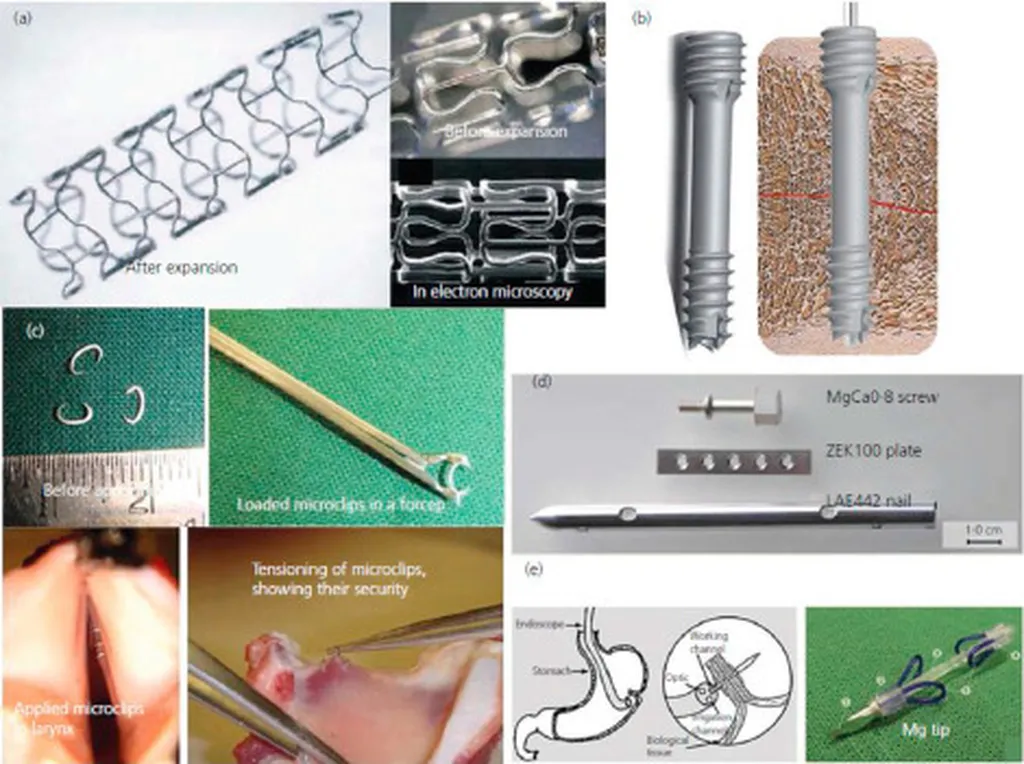In the ever-evolving world of orthopedic implants, a breakthrough in biodegradable metals (BMs) is making waves, promising to reshape the industry and improve patient outcomes. Researchers, led by Xin Huang from the Department of Materials at Yantai Nanshan University and the School of Materials Science and Engineering at Central South University, have published a comprehensive review in the International Journal of Extreme Manufacturing (which translates to “International Journal of Extreme Manufacturing” in English). This review, titled “Insights into biodegradable Mn-incorporated Fe-based scaffolds in orthopedics: bridging manufacturing techniques, physicomechanical properties, and multifunctional bioapplications,” sheds light on the potential of Mn-incorporated Fe-based alloys (Fe-Mn alloys) as next-generation orthopedic implants.
Biodegradable metals have long been sought after for their ability to provide temporary mechanical support and eventually dissolve harmlessly within the body. Traditional Fe-based BMs have shown promise due to their excellent mechanical properties and biocompatibility. However, their slow degradation rate has been a significant hurdle. Enter Fe-Mn alloys, which offer a solution to this problem and also address the incompatibility of magnetic resonance imaging (MRI) for Fe alloys.
“The emergence of Mn-incorporated Fe-based alloys offers a dual advantage,” explains Xin Huang. “They not only accelerate the degradation rate but also make the implants MRI-compatible, which is crucial for post-operative monitoring.”
The review highlights the cutting-edge advances in the degradation, mechanical, and magnetic properties of Fe-Mn alloys, as well as their osteogenic performance. One of the critical challenges addressed is the cytotoxicity issue arising from the enrichment of manganese ions in porous structured Fe-Mn alloys. The researchers emphasize the need to strike a balance among biocompatibility, structure, and degradation rate to fully harness the potential of Fe-Mn alloys in orthopedic applications.
The implications of this research extend beyond the medical field, with significant commercial impacts for the energy sector. The development of advanced manufacturing techniques for Fe-Mn alloys could lead to innovations in materials science, benefiting industries that require high-performance, biodegradable materials.
As the world continues to seek sustainable and efficient solutions, the insights provided by Xin Huang and their team offer a glimpse into the future of orthopedic implants and beyond. The review not only bridges the gap between manufacturing techniques, physicomechanical properties, and bioapplications but also sets the stage for further advancements in the field.
In the words of Xin Huang, “The journey towards optimizing Fe-Mn alloys is ongoing, but the potential benefits for patients and the broader industry are immense. This research is a stepping stone towards a future where biodegradable implants are not just a possibility but a reality.”
With the publication of this review in the International Journal of Extreme Manufacturing, the scientific community is one step closer to unlocking the full potential of Fe-Mn alloys, paving the way for innovative solutions in orthopedics and beyond.

